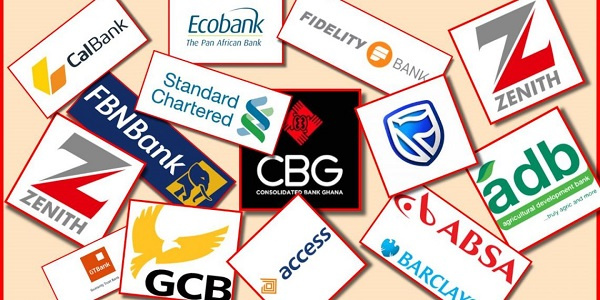Loans and advances constitute 30.9% of banking industry total assets value
Total assets of the banking industry recorded a stronger year-on-year growth of 24.8 percent to GHS 194.3 billion as at April 2022, compared to a growth of 16.4 percent in April 2021.
Loans and advances constitute 30.9% of banking industry total assets value
Gross loans and advances made to both the private and public sectors makeup 30.9% of the total assets of the banking industry.
Total gross loans and advances at end-April 2022, the Central Bank reveals in its May 2022 Monetary Policy Report, amounts to some GHS 60.2bn.
The industry’s total assets per the same report is valued at GHS 194.3bn.
Total assets of the banking industry recorded a stronger year-on-year growth of 24.8 percent to GHS 194.3 billion as at April 2022, compared to a growth of 16.4 percent in April 2021.
The higher growth in assets reflected in both domestic assets and foreign assets. Domestic assets increased by 25.2 percent in April 2022 from 17.2 percent in April 2021 while foreign assets grew by 18.5 percent, compared to a growth of 5.6 percent during the same comparative period.
The share of foreign assets in total assets declined to 6.2 percent from 6.5 percent, while that of domestic assets increased from 93.5 percent to 93.8 percent on account of a higher growth in domestic assets during the reference period.
According to the Bank of Ghana (BoG), gross loans and advances increased by 25.8 percent (year-on-year) to GHS 60.2 billion at end-April 2022 compared to a growth of 7.0 percent in April 2021.
The stronger growth in gross loans and advances reflected in both private and public sector credit. Private sector credit recorded a rebound in growth of 26.5 percent to GHS 54.2 billion in April 2022 compared with a growth of 6.9 percent during the corresponding period in the previous year.
Public sector credit also recorded a higher growth of 19.6 percent to GHS 6.0 billion compared to a growth of 7.4 percent in the previous year. In terms of market share, the private sector continued to hold the bigger share of total credit of 90.0 percent in April 2022, a marginal increase from 89.5 percent in April 2021.
Accordingly, the share of public sector credit declined marginally from 10.5 percent to 10.0 percent between the two periods.
Asset Quality
The banking industry’s asset quality, the Central Bank asserts, improved (year-on-year), evidenced by the decline in the NPL ratio from 15.5 percent in April 2021 to 14.3 percent in April 2022. When adjusted for the fully provisioned loan loss category, the industry’s adjusted NPL ratio also declined sharply from 6.5 percent to 4.2 percent
The decline in the NPL ratio was on the back of a higher growth in the stock of loans from 7.0 percent to 25.8 percent during the review period. The stock of NPLs, on the other hand, increased to GH¢8.6 billion in April 2022 from GH¢7.4 billion in April 2021, representing a growth of 15.8 percent (comparative growth of 11.1% in April 2021).
The increase in the NPL stock indicates that some asset quality risks still remain within the banking sector. The extension of the loan repayment moratoria deadline by the Bank of Ghana to December 31, 2022 is expected to provide relief to customers adversely impacted by the pandemic and help moderate the growth in non-performing loans within the banking sector.
In terms of sectorial performance, all but three sectors recorded improvements in their NPL ratios during the period under review. These are: electricity, water and gas (from 22.6% to 12.2%); manufacturing (from 18.3% to 10.9%); mining and quarrying (from 10.7 % to 6.5%); commerce and finance (from 21.9% to 18.9%); and the services sectors (from 9.1% to 8.7%).
On the other hand, the sectors that recorded increases in their NPL ratio were: construction (from 24.0% to 32.1%); transportation, storage and communication (from 10.4% to 12.4%); and the agriculture, forestry and fishing sectors (from 23.7% to 25.0%).
The sector with the lowest NPL ratio was the mining and quarrying sector while the construction sector had the largest proportion of its loans impaired.


